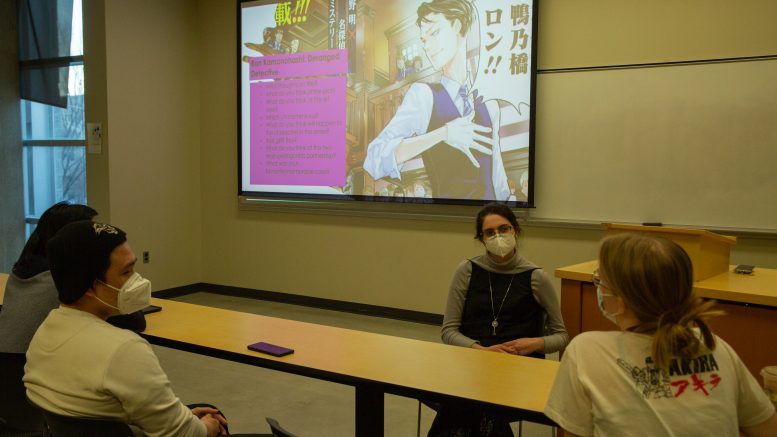UMAnime recently introduced its manga club, a regular event for students to read portions of manga series and discuss them with fellow fans.
Manga are Japanese graphic narratives. Just like other comics around the world, manga comprises a wide variety of distinct genres from romantic slice-of-life comedies or explosive action series to psychological horror.
One of UMAnime’s event planners, Kaitlyn Goncalves, is a master’s student in the U of M’s department of English, theatre, film & media. She created the manga club as part of UMAnime’s regular programming.
According to Goncalves, offering an array of frequent events in order to provide students with the opportunity to convene, chat and forge new relationships on the foundation of their shared interests is a priority for UMAnime.
Most of the group’s programming was moved to virtual formats to abide by public health orders during lockdowns.
Prior, when UMAnime was smaller and could invite members to gather in its club room, the club served as a space for students to swap volumes of manga and talk about mutual favourites.
During one of UMAnime’s recent coffee hours, Goncalves noticed people discussing manga. From there, Goncalves realized that a manga club structured like a book club would give students a place to gather, read specific titles and engage in discussion about manga specifically.
The response to Goncalves’s initiative was striking, with the last manga club meeting drawing about 30 attendees.
Goncalves explained that one of her goals for the manga club was to provide structure to the discussion beyond a conversational format. She creates discussion prompts to give the group a starting point.
Goncalves said that her background in English has helped her approach organizing the club.
“As an English major you’re focused on the critical thinking of different themes and the [depth] of characters or the genre,” she said.
“In the last meeting I was surprised,” she continued. “I understand everyone is a student, and not knowing what their background is currently but it’s nice to see students really getting into talking about the manga and bringing up different stuff that I haven’t thought about.”
Overall, Goncalves said that gathering in person has added benefits because there is time after meetings for students to mingle and create one-on-one relationships. She believes that the “in between-ness” of the time after meetings gives people space to make friends.
“It’s the after,” she explained. “Because then after people can talk amongst themselves, actually build friendships and leave the manga club being like, ‘hey, what are you doing after this?’ Because with online, you’re there for one purpose and then you just click away.”
While students are juggling “reading textbooks and things they have to read,” Goncalves thinks “it’s nice to have a reason to read something fun like manga.”
Anime and manga are often categorized by the demographics they are marketed toward. Shounen manga, for instance, refers to manga aimed at boys, while shoujo manga refers to manga aimed at girls.
For Goncalves, exposing readers to an assortment of manga — from shoujo to shounen — is important.
“What I’ve noticed is when it comes to anime, I guess both anime and manga, there’s definitely a favouritism in genres, shounen definitely being one of them,” she said.
“Even though it’s just the U of M crowd, my plan is to show and broaden the spectrums of genre in manga so that we’re not stuck into this popularity contest.”
Ultimately, Goncalves hopes the manga club will draw enough interest for someone to be able to take over the club and continue it in future.
Students interested in learning about UMAnime’s programming can visit https://umanime.club/ for more details.




